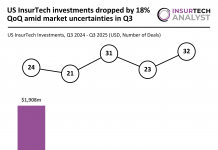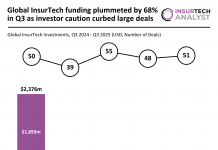A study by CyberCube, AM Best and Aon has found a hidden cyber risk in the US property insurance market could trigger over $12.5bn in losses for the industry.
According to Carrier Management, hidden cyber risk – which can include silent cyber – could create longer-term financial damage for carriers by harming the Best Capital Adequacy Ratio (BCAR). The publication added that while a company’s financial strength rating is based in part of reinsurance, diversification and liquidity, a big drop in the BCAR can cause a drop in the financial strength rating of an insurer.
To conduct the study, CyberCube developed a sample portfolio based on the US business property industry and then subjected it to modelled cyber loss scenarios and quantified non-physical damage losses.
Following this, AM Best used the results of the analysis to assess the effect of the balance sheets of 579 US property insurers. Aon, meanwhile, quantified the risks and exposures written back into property policies and highlighted some of the best practices for managing the risks.
The analysis by the three companies found that 12 of the property insurers analysed fell one level in the Best Capital Adequacy Ratio, will four dropped two levels. One insurers fell by three, and another fell by four.
The report detailed that while the 1-in-100 year loss estimate of $12.5bn is a manageable cyber risk cost in the property market overall, ‘problems are coming’. The authors of the study anticipate the large growth in cyber losses expected in the new few years to challenge the industry’ ability to manage the rapidly climbing loss estimate costs.
Despite this, the study details that explicit underwriting and ‘clarity of cover’ can help address these challenges. In addition, the report suggests favourable risk management techniques such as modelling an insurer’s own individual portfolios with customised stress scenarios to identify cyber risks exposures as a way to improve the situation. It also suggests insurers can work with their reinsurance broker to manage their accumulation risk.
The report concludes, “Thorough underwriting of cyber exposures will also help to clarify for insurance buyers what cyber cover they have in their property policies and how it might respond. Offering cyber coverage through package policies, or write-backs in property policies, may provide adequate cover for small businesses. Carriers should be explicit in what coverage is granted and how the property policy might respond.”
AM Best director of industry research Sridhar Manyem said, “While losses of $12.5 billion are relatively low when placed in the context of natural catastrophes, considering these exposures are often unpriced or unaccounted for in enterprise risk management, the impact on carriers can be significant and more importantly, unexpected.”
CyberCube head of Industry Engagement added, “CyberCube’s modeled loss figure of $12.5 billion suggests that the U.S. property market is exposed to $9.5 billion of attritional losses and $3 billion of catastrophic losses in the return period,” Cole noted in prepared remarks. “It is apparent that the property market is already paying attritional losses for non-affirmative cyber coverage.”
Copyright © 2021 FinTech Global










